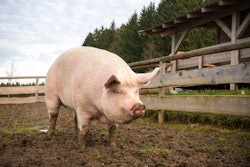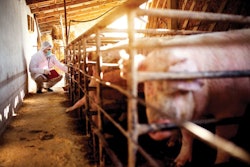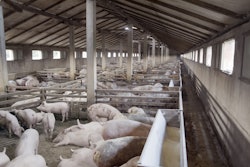
In mid-November, the veterinary authority of Bangladesh detected the South Asian state’s first cases of African swine fever (ASF).
According to the official notification submitted recently to the World Organisation for Animal Health (WOAH), domestic swine at a Pig Development Farm tested positive for the virus. More than half of the 414 animals there died.
The farm is located in Rangamati, a district in the southeastern division of Chittagong. Source of the infection is unknown.
Based on information supplied to WOAH, the outbreak premises appears to be around 30 kilometers from the border with the Indian state of Mizoram. While the disease caused large losses of animals in Mizoram in 2021 and early 2022, no outbreaks have been reported in Mizoram for more than one year.
ASF outbreak at commercial farm in eastern Russia
Over the past week, the Russian veterinary authority has notified WOAH about two further ASF outbreaks in the Far Eastern federal district.
In the Primorskiy region, presence of the virus was detected in mid-December at a commercial farm with more than 50,000 pigs in the Mikhaylovskiy district. Seventy of the animals are reported to have died. Around the same time, six infected wild boar were found at one location in another district.
In the disease wave that started in Primorskiy in May, there have been nine confirmed ASF outbreaks. Directly impacted have been a total of almost 240,000 pigs at five farms and two backyard herds, as well as seven wild boar. All the domestic pig herds affected so far have been located within a distance of approximately 30 kilometers.
ASF cases elsewhere in Asia
The animal health agency for the Hong Kong Special Administrative Region has confirmed to WOAH cases of ASF at a third farm.
Latest update puts the number of animals involved in this latest outbreak at 949, all of which have been culled to prevent further spread of the virus.
Culling of pigs has been completed at the two previous outbreaks, and cleaning and disinfecting procedures are ongoing, the agriculture department reports.
Since the territory’s first cases in this outbreak wave two months ago, a total of 7,591 pigs have been directly affected. They were all at licensed farms in the Yuen Long district in the New Territories.
Latest update to WOAH from the South Korean authorities indicate no change to the 585 outbreaks previously reported. Since August 2021, these have affected more than 92,000 pigs from 38 herds, as well as 1,022 wild boar.
Since the country’s first recorded cases in 2019, the number of ASF-infected wild boar in South Korea has reached 3,448, according to Pig & People (as of December 20).
This is 23 more than the previous edition dated December 11. Infected wild boar have been found in 39 cities/counties in four provinces.
Meanwhile, the source confirms that the number of outbreaks in domestic pigs remains unchanged at 38. The most recent outbreak began three months ago.
Risk warnings issued in the Philippines
In one region of the Philippines, the Department of Agriculture is warning hog owners not to feed swill or other food scraps to their animals due to the risk of transmitting the ASF virus.
This repeated warning comes from the Cordillera Administrative Region (CAR) in northern Luzon, according to Philippine News Agency (PNA). The official reports that another possible source of infection is from pigs offered for sale online at low prices.
So far this year, 49 ASF cases have been confirmed in CAR. This is fewer than at the peak in the region in 2021, but more than last year.
CAR is one of nine regions with active ASF cases in the Philippines, according to the latest Bureau of Animal Industry (BAI) update dated November 29. This BAI report confirms that ASF has been detected in all 17 regions of the Philippines, and in 72 of its 82 provinces.
View our continuing coverage of the global African swine fever situation.
FMD returns to China municipality
In the first week of December, a number of foot-and-mouth disease (FMD) cases in domestic swine were confirmed at a slaughterhouse in the municipality of Chongqing in the People’s Republic of China. This is according to a recent notification to WOAH.
At the facility in the Qijiang district, seven of the 156 animals in one group tested positive for the O-type of FMD virus. The whole group was culled, and their carcasses destroyed.
Source of the infection was attributed in the report to the illegal movement of animals.
Last FMD cases in this region of China was in December 2020.
Like ASF, FMD is a notifiable disease that can cause high morbidity and mortality in affected species, which include wild and domestic cattle, sheep and goats, as well as pigs.
According to WOAH, FMD circulates in 77% of the global livestock population. Seven strains of the Aphthovirus are known to be present widely in Africa, Asia, the Middle East, and a limited area of South America.
The latest outbreak in China is unusual, in that it is the only one registered with WOAH to involve swine.

















